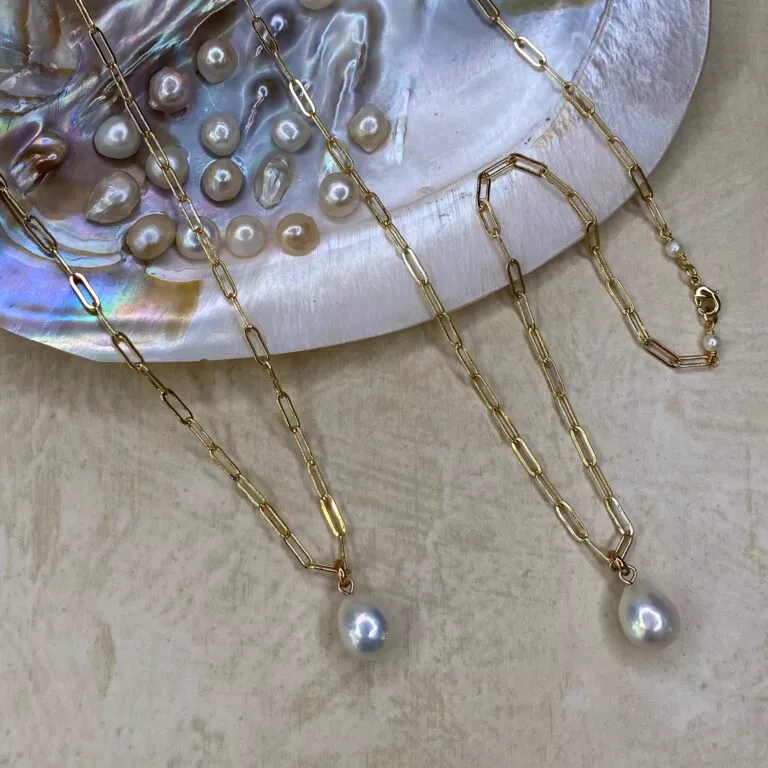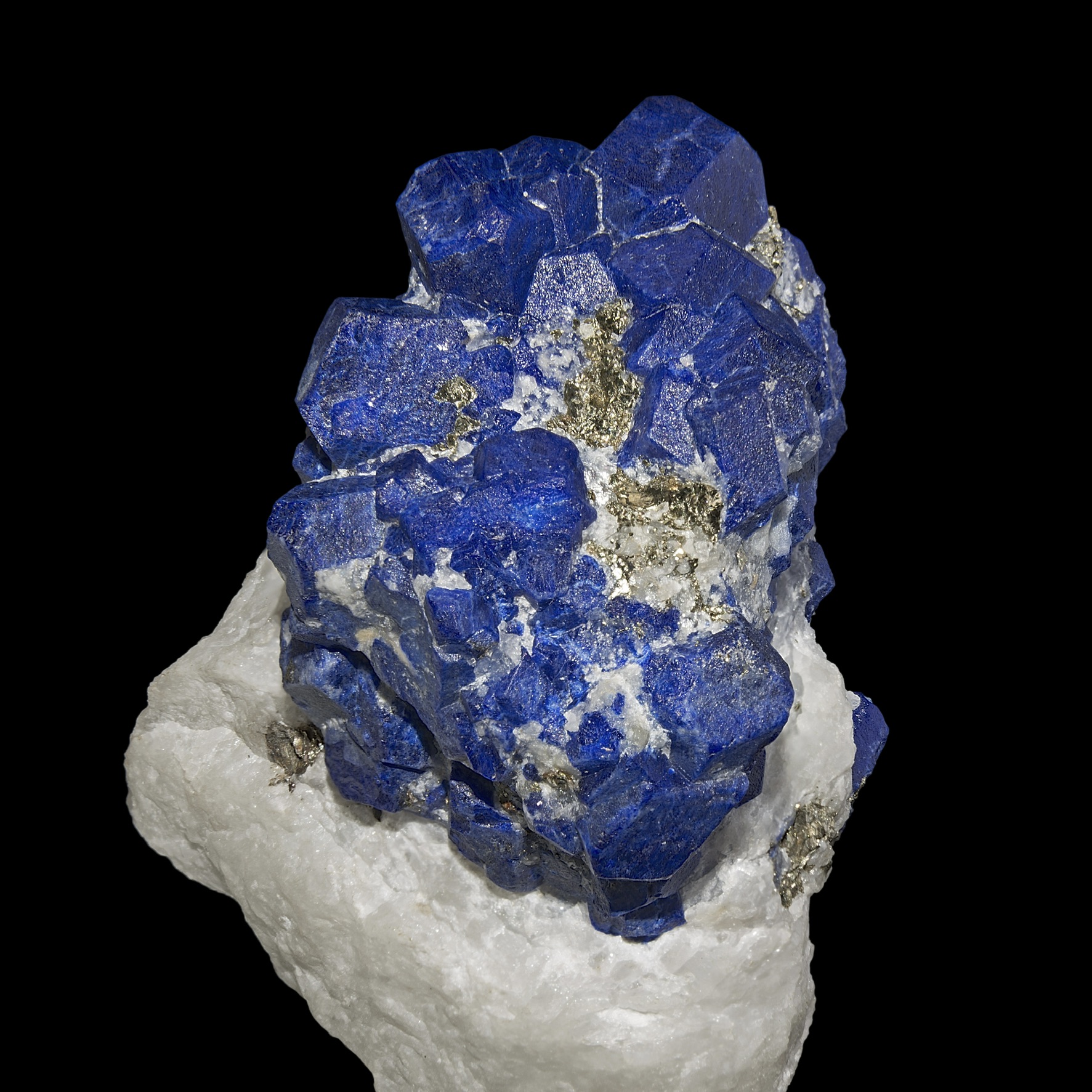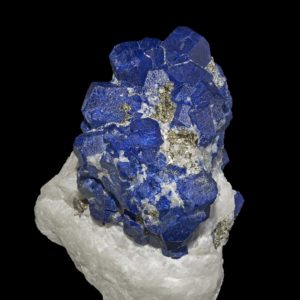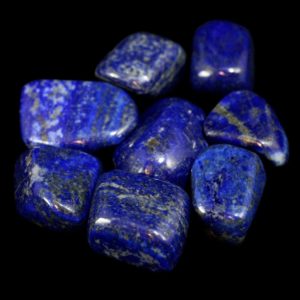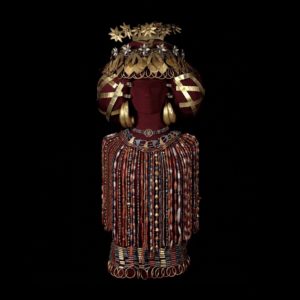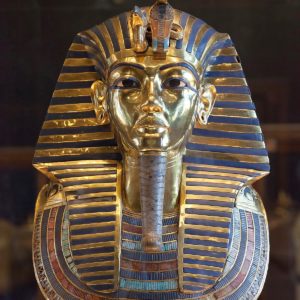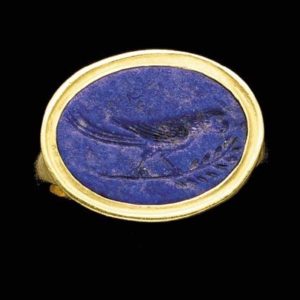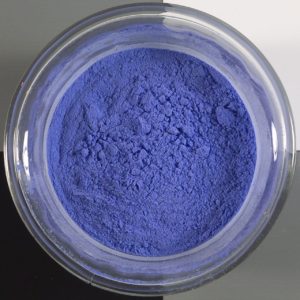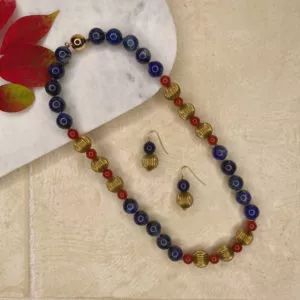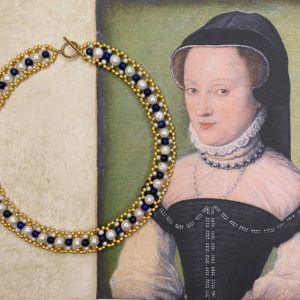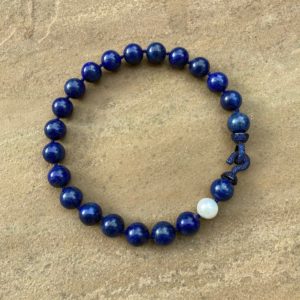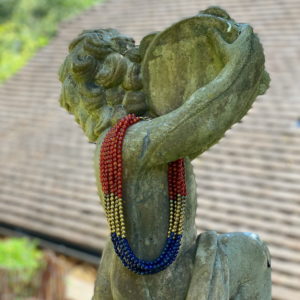Lapis Lazuli
Lapis Lazuli, meaning “Blue Stone”, is a deep blue rock used as a semi-precious stone that has been prized since Antiquity for its intense colour
As a rock, Lapis Lazuli is composed of several minerals, Lazurite (being the most important one), Pyrite (the metallic gold specks) and Calcite (the white layers) to name but a few Lapis Lazuli has been valued through most of recorded human history and treasured by the ancient civilisations of Mesopotamia, Egypt, China, Greece, and Rome. Mining for Lapis occurred in Afghanistan as early as 7,000 BC and was used in Mesopotamia by the Akkadians, Assyrians and Babylonians for seals and jewellery. In Egypt it was abundantly used in ornamental objects, amulets and jewellery (Tutankhamun’s funerary mask is inlaid with Lapis Lazuli) and powdered Lapis was used as a cosmetic pigment.
By the end of the Middle Ages, Lapis Lazuli began to be exported to Europe where it was ground into powder and made into Ultramarine, the finest and most expensive of all blue pigments. Ultramarine was used by some of the most important artists of the Renaissance and Baroque, including Titian and Vermeer and was often reserved for the clothing of the central figures of their paintings, especially the Virgin Mary
Today, Lapis is mainly used in jewellery, is the Birthstone for September and the gem of the 9th wedding anniversary.
Afghanistan is still the world’s leading source of Lapis Lazuli. Other countries that produce notable amounts include Chile, Argentina, Russia, Pakistan and Canada
📷 Paxton Gate; Wikipedia; Christie’s; Masterpigments; Sassoferato, The Virgin in Prayer, 1640-50; Vermeer, Girl with a Pearl Earring

